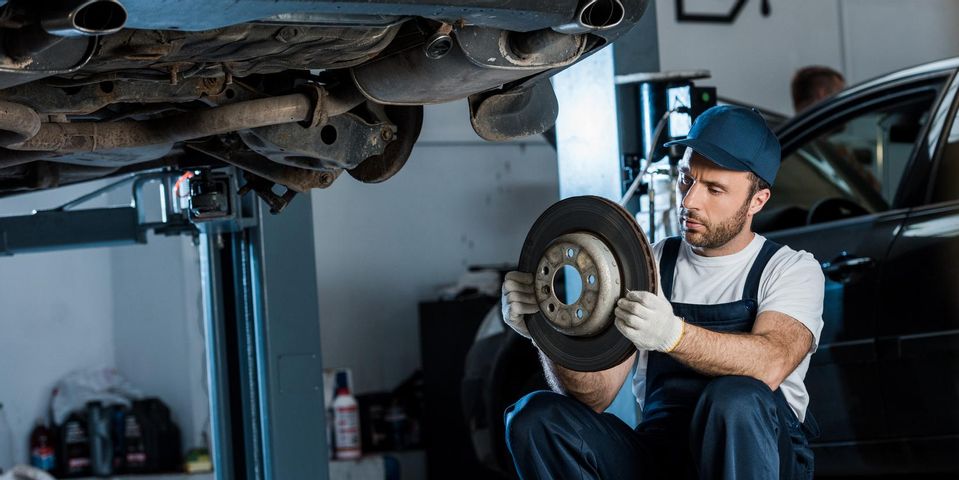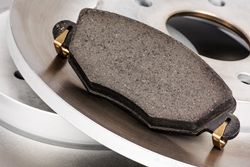
Because the brakes are one of the most important components of your car, you should understand how they work. If you know how the brake pads, calipers, and rotors function together, you’ll have an easier time recognizing when one of these components is out of sync or in need of repairs. The guide below explains how your car brakes work and the different functions of pads and rotors.
How Braking Works
When you depress the brake pedal, the hydraulic line that connects to the calipers makes them squeeze together. The brake pads, which act as a cushion between the calipers and rotors, clamp down and create the friction that slows the car. If any of these components are wearing or malfunctioning, you may experience difficulty braking, hear a grinding noise while you’re slowing, or struggle with car brakes that are stuck in place.
How Brake Pads & Rotors Work Together
 A brake pad’s primary function is to provide friction on the rotors without being too abrasive. They’re usually made from a mix of materials like graphite, iron, rubber, and copper to make them resistant to heat. In the braking system, they are the components that take the most wear, and they need replacement more often—usually every 20,000 to 50,000 miles.
A brake pad’s primary function is to provide friction on the rotors without being too abrasive. They’re usually made from a mix of materials like graphite, iron, rubber, and copper to make them resistant to heat. In the braking system, they are the components that take the most wear, and they need replacement more often—usually every 20,000 to 50,000 miles.
Rotors are metal discs secured to the axles that help absorb heat generated during the braking process. They also transfer the friction into slowing the car’s movement. While they don’t wear as fast as brake pads, rotors’ smooth surfaces will become rough and uneven with wear over time. When this happens, have them resurfaced or replaced to maintain efficient braking.
Do you need a new set of brake pads or want to get your rotors resurfaced? Visit T. Busch Automotive in Jefferson, OH. For over 50 years, they’ve been the area’s source for regular oil changes, tire rotations, collision repairs, car brake updates, and engine work. To schedule service, call (440) 576-1971. Learn more about their experience online.
About the Business
Have a question? Ask the experts!
Send your question

